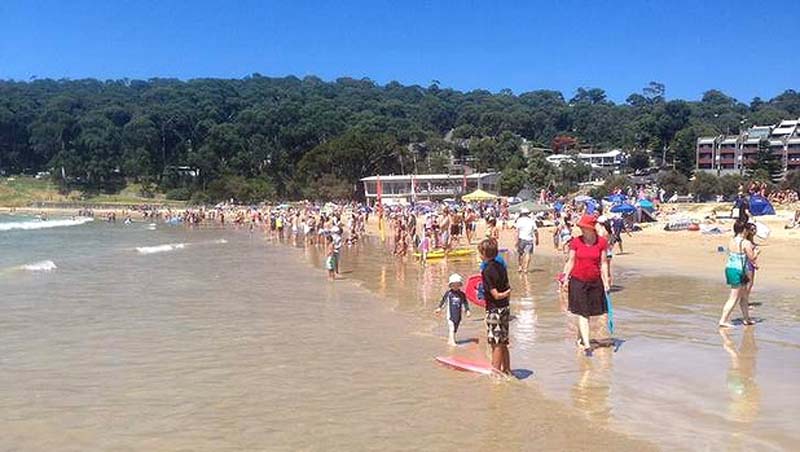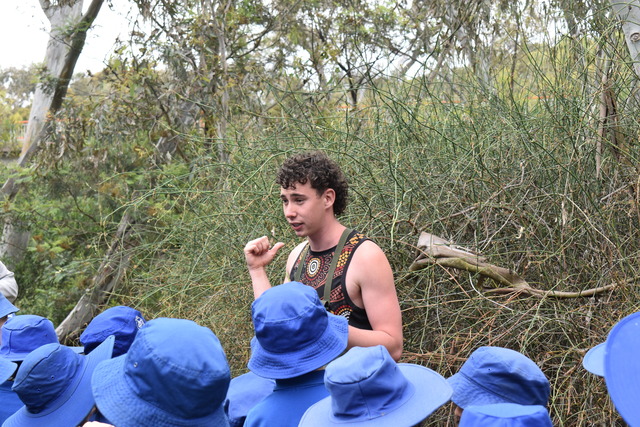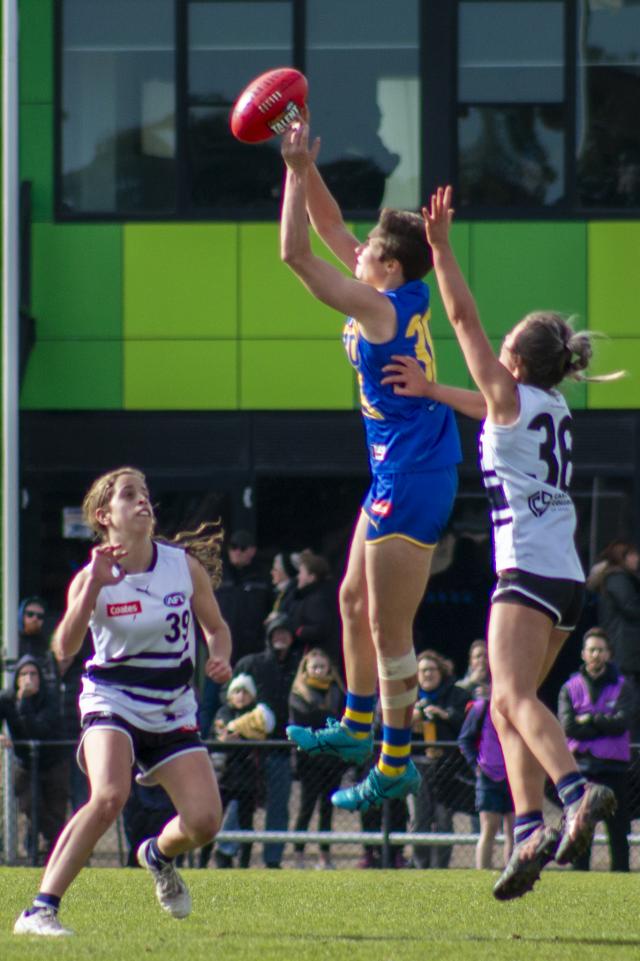Swimmers fled for their lives after a shark alarm forced the evacuation of hundreds of beach-goers from a popular Victorian beach following the sighting of a four-metre shark only 200 metres from the shore.
Only hours after the Lorne sighting, a member of the public reported another shark, this time off the coast of an unpatrolled beach near Anglesea.
A Surf Life Saving Victoria spokeswoman said a boat was dispatched to investigate the sighting but life savers were unable to verify the report.
Lorne Surf Life Saving Club patrol captain Nick Roffey said a Westpac lifesaving helicopter spotted the giant shark swimming about 200 to 300 metres from the shore about midday on Sunday.
The helicopter notified the surf life saving club, which immediately sounded the alarm.
‘‘People swam back within a minute, minute-and-a-half – we had everyone cleared out really quickly,’’ Mr Roffey told Fairfax Media.
‘‘We sent out the inflatable rescue boat to shoo the shark away, and eventually got it swimming past the pier and around the back of Lorne.’’
When asked what type of shark it was, one lifesaver who had been out on the water in a dinghy replied: ‘‘I dunno mate, but it was massive’’.
Linden De Ridder, 27, and 29-year-old Katie McInnes, of Chelsea, were swimming more than 300 metres offshore on a stand-up paddle board when the shark alarms went off.
‘‘We saw the helicopter and at first, I thought I surely must have been in trouble,’’ said Mr De Ridder.
‘‘We just watched the helicopter for a while, then we heard the alarms and saw the lifeguards waving flags on the beach, and that’s when I thought, ‘shark!’”
Mr De Ridder swam back to shore alongside Katie, while thousands on the beach watched the helicopter, and the shark, get closer.
‘‘I have never swum so fast – fear is a great motivator,’’ Mr De Ridder said.
Local surf lifesavers were impressed.
‘‘He should have been here a couple of weeks ago for the Pier to Pub [swim],” said one.
“Swimming like that, he would have won $10,000.’’
Local surf lifesavers said it was more than 20 years since Lorne beach had been evacuated because of a shark.
Mr Roffey said ‘‘it’s been a long time since a shark has been sighted at Lorne’’.
‘‘It’s definitely not in my recent memory … but it looked like the shark was just following the coast along and swam in,’’ he said.
Reports of shark sightings and attacks have recently intensified as the West Australian government introduced a controversial culling program last week after the deaths of seven people in shark attacks in WA waters over the past three years.
The first shark was caught and killed on Australia Day by a commercial fisherman, who shot the three-metre tiger shark one kilometre off Old Dunsborough in the state’s south-west.
The culling program has drawn angry reactions from conservationists, and protests have been held in at least 10 locations across the nation, from the NSW central coast to Adelaide, Melbourne, Hobart and Cottesloe, Broome and Perth in WA.
Protests were also been held in New Zealand and South Africa.
The protests came hours after an under-size two-metre shark, believed to be a tiger shark, was pulled from a baited drum line off Perth’s Leighton Beach by fisheries officers.
The animal – the second to be killed under the program – was dumped further offshore.
The culling program has gone ahead after federal Environment Minister Greg Hunt granted Western Australia an exemption under the Environment Protection and Biodiversity Conservation Act allowing the state to hunt sharks.
The exemption allows it to hunt great white sharks, which are flagged as “vulnerable” on the International Union for the Conservation of Nature’s Red List of Threatened Species and are protected by the Convention on International Trade in Endangered Species.







